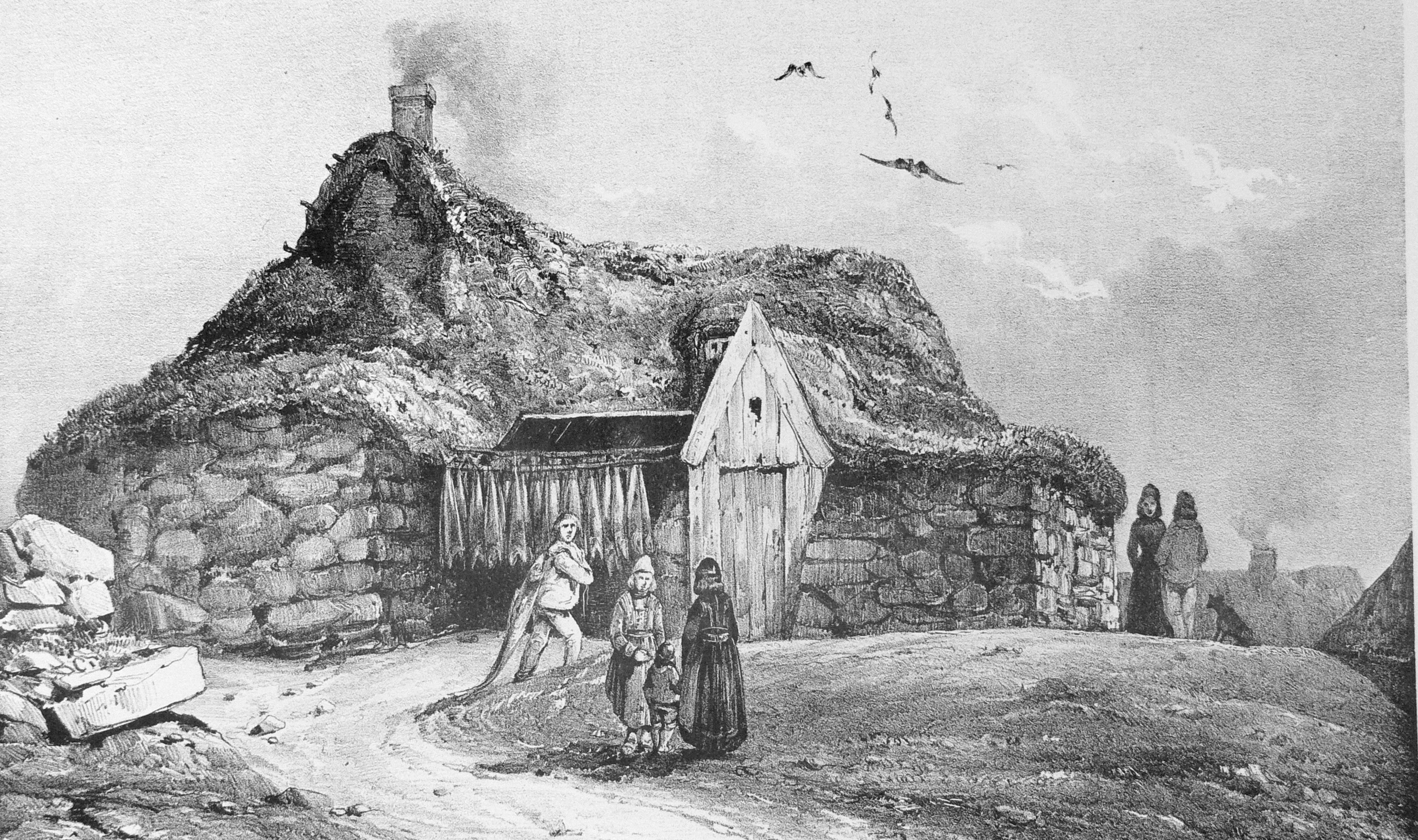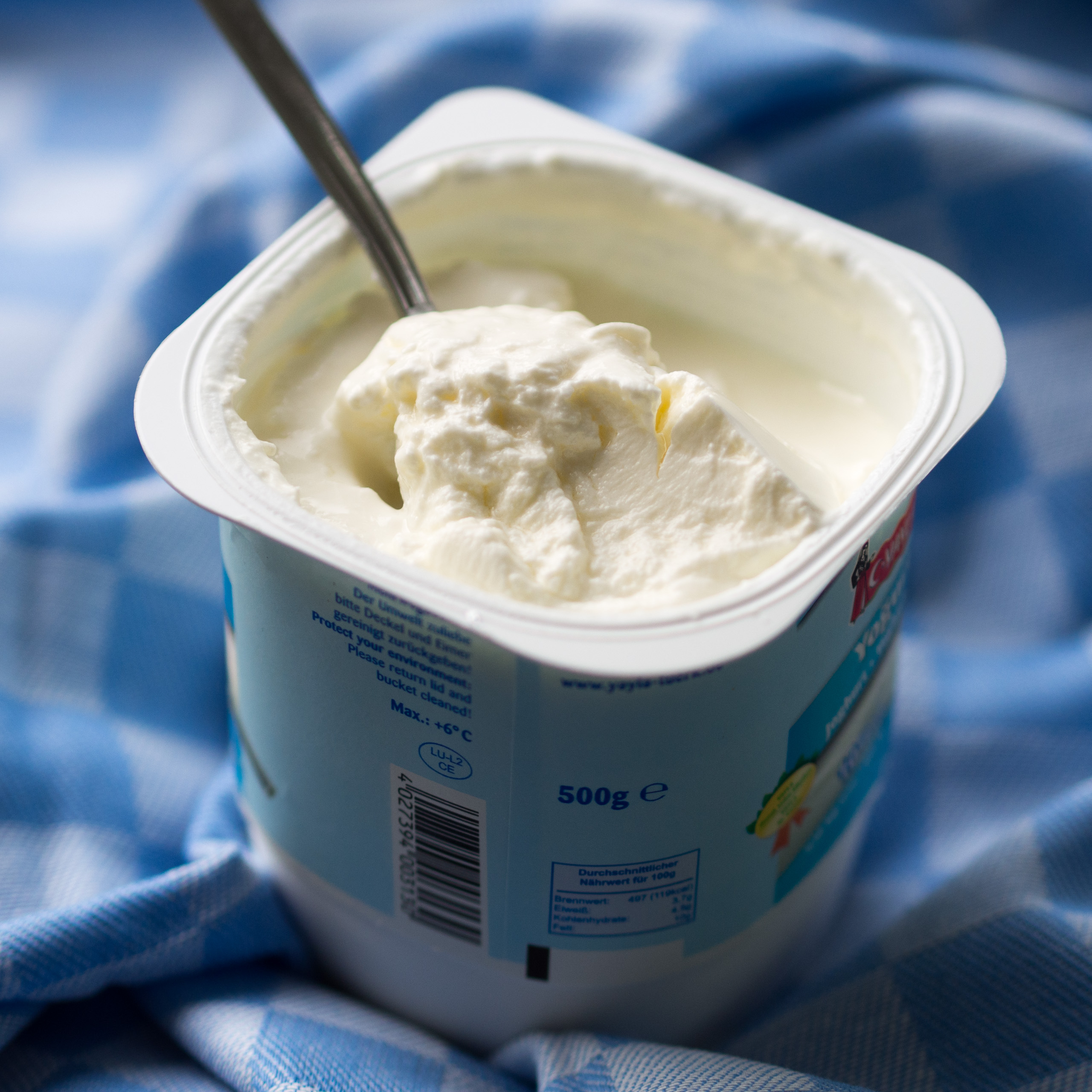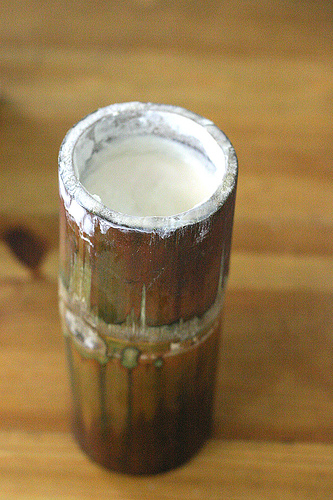|
Skyr
Skyr ( ; ) is a traditional Icelandic cultured dairy product. It has the consistency of strained yogurt, but a milder flavor. Skyr can be classified as a fresh sour milk cheese, similar to curd cheese consumed like a yogurt in the Baltic states, the Low Countries and Germany. It has been a part of Icelandic cuisine for centuries. Skyr has a slightly sour dairy flavor, with a hint of residual sweetness. It is traditionally served cold, sometimes with cream. Commercial manufacturers of skyr may add flavors such as vanilla, coffee, or fruit. Etymology The word skyr is related to the English word ''shear'' (to cut), referring to how the milk is split into the liquid whey and the thick skyr. History Skyr is mentioned in a number of medieval Icelandic sources, including Egil's saga and Grettis saga. It is however unclear how similar this was to modern-day skyr, as no detailed descriptions of skyr exist from this period. Originally it was made from sheep milk, b ... [...More Info...] [...Related Items...] OR: [Wikipedia] [Google] [Baidu] |
Icelandic Cuisine
The cuisine of Iceland has a long history. Important parts of Iceland, Icelandic cuisine are lamb, dairy, and Fish as food, fish, the latter because Iceland has traditionally been inhabited only near its coastline. Popular foods in Iceland include skyr, hangikjöt (smoked lamb), kleina, kleinur, laufabrauð, and bolla (food), bollur. Þorramatur is a traditional buffet served at midwinter festivals called Þorrablót; it includes a selection of traditionally cured meat and fish products served with ''rúgbrauð'' (dense dark and sweet rye bread) and brennivín (an Icelandic akvavit). The flavors of this traditional country food originate in its food preservation, preservation methods: pickling in fermented whey or brine, drying, and smoking. Modern Icelandic chefs usually emphasise the quality of available ingredients rather than age-old cooking traditions and methods. Numerous restaurants in Iceland specialise in seafood. At the annual Food and Fun chef's competition (held sinc ... [...More Info...] [...Related Items...] OR: [Wikipedia] [Google] [Baidu] |
Strained Yogurt
Strained yogurt, Greek or Greek-style yogurt, yogurt cheese, sack yogurt, kerned yogurt or labneh is yogurt that has been strained to remove most of its whey, resulting in a thicker consistency than normal unstrained yogurt, while still preserving the distinctive sour taste of yogurt. Like many types, strained yogurt is often made from milk enriched by boiling off some water content, or by adding extra butterfat and powdered milk. In Europe and North America, it is often made from low-fat or fat-free cow's milk. In Iceland a similar product named skyr is made. Strained yogurt is usually marketed in North America as "Greek yogurt" and in the United Kingdom as "Greek-style yoghurt", though strained yogurt is also widely eaten in Levantine, Eastern Mediterranean, Middle Eastern, Central Asian, South Asian, and Eastern European cuisines, where it is often used in cooking, as it curdles less readily when cooked. It is used in a variety of dishes, cooked or not, savory or sweet. S ... [...More Info...] [...Related Items...] OR: [Wikipedia] [Google] [Baidu] |
Filmjölk
(), also known as , is a traditional fermented milk product from Sweden, and a common dairy product within most of the Nordic countries. It is made by fermentation (food), fermenting cow's milk with a variety of bacteria from the species ''Lactococcus lactis'' and ''Leuconostoc mesenteroides''. The bacteria metabolize lactose, the sugar naturally found in milk, into lactic acid, which means people who are lactose intolerant can tolerate it better than other dairy products. The acid gives a sour taste and causes proteins in the milk, mainly casein, to coagulation, coagulate, thus thickening the final product. The bacteria also produce a limited amount of diacetyl, a compound with a buttery flavor, which gives its characteristic taste. has a mild and slightly acidic taste. It has a shelf-life of around 10–14 days at refrigeration temperature. Overview In the Nordic countries, is often eaten with breakfast cereal, muesli or crushed crisp bread on top. Some people add suga ... [...More Info...] [...Related Items...] OR: [Wikipedia] [Google] [Baidu] |
Iceland
Iceland is a Nordic countries, Nordic island country between the Atlantic Ocean, North Atlantic and Arctic Oceans, on the Mid-Atlantic Ridge between North America and Europe. It is culturally and politically linked with Europe and is the region's westernmost and most list of countries and dependencies by population density, sparsely populated country. Its Capital city, capital and largest city is Reykjavík, which is home to about 36% of the country's roughly 380,000 residents (excluding nearby towns/suburbs, which are separate municipalities). The official language of the country is Icelandic language, Icelandic. Iceland is on a rift between Plate tectonics, tectonic plates, and its geologic activity includes geysers and frequent Types of volcanic eruptions, volcanic eruptions. The interior consists of a volcanic plateau with sand and lava fields, mountains and glaciers, and many Glacial stream, glacial rivers flow to the sea through the Upland and lowland, lowlands. Iceland i ... [...More Info...] [...Related Items...] OR: [Wikipedia] [Google] [Baidu] |
Fermented Milk Products
Fermented milk products or fermented dairy products, also known as cultured dairy foods, cultured dairy products, or cultured milk products, are dairy foods that have been made by fermenting milk with lactic acid bacteria such as ''Lactobacillus ''Lactobacillus'' is a genus of gram-positive, aerotolerant anaerobes or microaerophilic, rod-shaped, non-spore-forming bacteria. Until 2020, the genus ''Lactobacillus'' comprised over 260 phylogenetically, ecologically, and metabolically div ...'', '' Lactococcus'', and '' Leuconostoc''. The fermentation process increases the shelf life of the product while enhancing its taste and improving the digestibility of its milk. There is evidence that fermented milk products have been produced since around 10,000 BC. A range of different Lactobacilli strains has been grown in laboratories allowing for many cultured milk products with different flavors and characteristics. These bacteria allow the production of many fermented milks ... [...More Info...] [...Related Items...] OR: [Wikipedia] [Google] [Baidu] |
Egil's Saga
''Egill's Saga'' or ''Egil's saga'' ( ; ) is an Icelandic saga (family saga) on the lives of the clan of Egill Skallagrímsson (Anglicised as Egill Skallagrimsson), an Icelandic farmer, viking and skald. The saga spans the years c. 850–1000 and traces the family's history from Egill's grandfather to his offspring. Its oldest manuscript (a fragment) dates back to c. 1250 AD. The saga comprises the sole source of information on the exploits of Egill, whose life is not historically recorded. Stylistic and other similarities between ''Egill's Saga'' and ''Heimskringla'' have led many scholars to believe that they were the work of the same author, Snorri Sturluson. The work is generally referred to as ''Egla'' by Icelandic scholars. Synopsis The saga begins in Norway around 850, with the life of Egill's grandfather Ulf (Kveldulf Bjalfason, Úlfr) aka Kveldulf or "Evening Wolf", and his two sons Thorolf (Þórólfr) and Skallagrim (Skalla-Grímr). Strife with the royal house dri ... [...More Info...] [...Related Items...] OR: [Wikipedia] [Google] [Baidu] |
Grettis Saga
''Grettis saga Ásmundarsonar'' (modern , reconstructed ), also known as ''Grettla'', ''Grettir's Saga'' or ''The Saga of Grettir the Strong'', is one of the Icelanders' sagas. It details the life of Grettir Ásmundarson, a bellicose Icelandic outlaw, and is set in the eleventh century. Overview ''Grettis saga'' is considered one of the Sagas of Icelanders (''Íslendingasögur''), which were written down in the thirteenth and fourteenth centuries and record stories of events that supposedly took place between the ninth and the eleventh centuries in Iceland. The earliest manuscript of ''Grettis saga'' was written down some time just before 1400 CE, and the saga is thought to have been composed in its current form in the fourteenth century, making it a relatively late addition to the genre.. Introduction. ''The Saga of Grettir the Strong'', p. ix The author is unknown but it is believed that the saga may have been based on a previous account of Grettir's life written by ... [...More Info...] [...Related Items...] OR: [Wikipedia] [Google] [Baidu] |
Scandinavia
Scandinavia is a subregion#Europe, subregion of northern Europe, with strong historical, cultural, and linguistic ties between its constituent peoples. ''Scandinavia'' most commonly refers to Denmark, Norway, and Sweden. It can sometimes also refer to the Scandinavian Peninsula (which excludes Denmark but includes a part of northern Finland). In English usage, Scandinavia is sometimes used as a synonym for Nordic countries. Iceland and the Faroe Islands are sometimes included in Scandinavia for their Ethnolinguistics, ethnolinguistic relations with Sweden, Norway and Denmark. While Finland differs from other Nordic countries in this respect, some authors call it Scandinavian due to its economic and cultural similarities. The geography of the region is varied, from the Norwegian fjords in the west and Scandinavian mountains covering parts of Norway and Sweden, to the low and flat areas of Denmark in the south, as well as archipelagos and lakes in the east. Most of the population ... [...More Info...] [...Related Items...] OR: [Wikipedia] [Google] [Baidu] |
Flatbrød
Flatbrød (literally "flat-bread") is a traditional Norwegian unleavened bread which is usually eaten with fish, salted meats, and soups. Originally it was the staple food of Norwegian farmers, shepherds and peasants. Flat bread is dry and free from water so it is possible to store it for a long period of time. Background The basic ingredients are barley flour, salt, and water, though many varieties exist which incorporate other staples. It was once generally eaten in all meals, most often with cured herring and cold boiled potato, often along with sour cream and/or butter. It may also accompany betasuppe, a traditional meat soup or lobscouse, a traditional stew. The thinner the bread is, the better it is. It is rolled and then cooked on a large griddle. The tradition of making flat bread used to be passed down through generation after generation by housewives, and each person had her own recipe for preparing it. It is still an important part of Norwegian food traditions, ... [...More Info...] [...Related Items...] OR: [Wikipedia] [Google] [Baidu] |
Rennet
Rennet () is a complex set of enzymes produced in the stomachs of ruminant mammals. Chymosin, its key component, is a protease, protease enzyme that curdling, curdles the casein in milk. In addition to chymosin, rennet contains other enzymes, such as pepsin and a lipase. Rennet has traditionally been used to separate milk into solid curds and liquid whey, used in the production of cheeses. Rennet from calves has become less common for this use, to the point that less than 5% of cheese in the United States is made using animal rennet today. Most cheese is now made using chymosin derived from bacterial sources. Molecular action of rennet enzymes One of the main actions of rennet is its protease chymosin cleaving the kappa casein chain. Casein is the main protein of Milk#Proteins, milk. Cleavage removes the slightly negatively charged glycomacropeptide (GMP) from the surface of the casein micelle. Because negative charges repel other negative charges, the GMP prevents casein micell ... [...More Info...] [...Related Items...] OR: [Wikipedia] [Google] [Baidu] |




